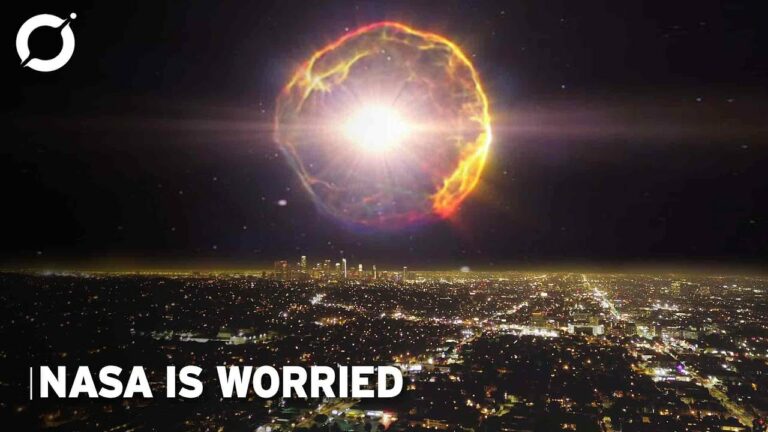NASA Gives Serious Warning About Betelgeuse Supernova Explosion Happening Soon
Betelgeuse is a red supergiant of spectral type M1-2 and one of the largest stars visible to the naked eye. It is usually the tenth-brightest star in the night sky and, after Rigel, the second-brightest in the constellation of Orion. It is a distinctly reddish, semiregular variable star whose apparent magnitude, varying between +0.0 and +1.6, has the widest range displayed by any first-magnitude star. At near-infrared wavelengths, Betelgeuse is the brightest star in the night sky. Its Bayer designation is α Orionis, Latinised to Alpha Orionis and abbreviated Alpha Ori or α Ori.
If it were at the center of our Solar System, its surface would lie beyond the asteroid belt and it would engulf the orbits of Mercury, Venus, Earth, and Mars. Nevertheless, there are several even larger stars in the Milky Way, including supergiants like Mu Cephei and the peculiar hypergiant, VY Canis Majoris. Calculations of Betelgeuse’s mass range from slightly under ten to a little over twenty times that of the Sun. For various reasons, its distance has been quite difficult to measure; current best estimates are on the order of 500–600 light-years from the Sun – a comparatively wide uncertainty for a relatively nearby star. Its absolute magnitude is about −6. Less than 10 million years old, Betelgeuse has evolved rapidly because of its large mass and is expected to end its evolution with a supernova explosion, most likely within 100,000 years. Having been ejected from its birthplace in the Orion OB1 association – which includes the stars in Orion’s Belt – this runaway star has been observed to be moving through the interstellar medium at a speed of 30 km/s, creating a bow shock over four light-years wide.
In 1920, Betelgeuse became the first extrasolar star whose photosphere’s angular size was measured. Subsequent studies have reported an angular diameter (i.e., apparent size) ranging from 0.042 to 0.056 arcseconds; that range of determinations is ascribed to non-sphericity, limb darkening, pulsations and varying appearance at different wavelengths. It is also surrounded by a complex, asymmetric envelope, roughly 250 times the size of the star, caused by mass loss from the star itself. The Earth-observed angular diameter of Betelgeuse is exceeded only by those of R Doradus and the Sun.
Starting in October 2019, Betelgeuse began to dim noticeably, and by mid-February 2020 its brightness had dropped by a factor of approximately 3, from magnitude 0.5 to 1.7. By 22 February 2020, Betelgeuse stopped dimming and started to brighten again; and, as reported on 25 February 2022, has remained in a more normal brightness range. Infrared observations found no significant change in brightness over the last 50 years, suggesting that the dimming was due to a change in extinction or “large-grain circumstellar dust”, rather than an underlying change in the luminosity of the star. A 2022 study using the Hubble Space Telescope suggests that occluding dust was created by a surface mass ejection. This surface mass ejection cast material millions of miles from the star that then cooled to form the dust that caused the star’s dimming.
Source:WikiPedia
Betelgeuse, Orion constellation’s most famous star, and now a bright red supergiant star, is nearing the end of its life. It will likely explode as a supernova in the future.
Do not forget to share your opinion with us to provide you with the best posts !




0 Comments